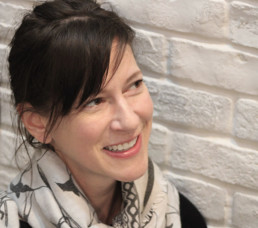The Making of the Third Child
by Lisa Tuininga
Step 1:
Wait until first two children are sufficiently independent to feed selves, sleep through night, and offer coherent language formation for both entertainment and debate. Only at that point should you continue to step 2.
Step 2:
Engage in discussion with spouse; when discussion fails take matters into own hands and stop taking birth control. When pregnancy is discovered tell children first, showing true elation. Tell spouse later. Wait until children are in bed so that fit of rage (including hole punched through bathroom door) is not discovered until morning.
Step 3:
Continue as usual through pregnancy until month four, when shabby toaster in kitchen of three bedroom rambler shorts out and delivers electric shock. Electric shock knocks you to ground, and visit to doctor for next ultrasound shares news of possible birth defect. Consider this. Consider whether these two incidents are related.
Step 4:
As pregnancy advances, visit more doctors, and hear news of dire prognosis. Heart murmur, spina bifida, possibility of death, words like unsustainable fetus. Become religious. Ignore doctors. Continue to care for children number 1 and 2, who are now ages six and eight.
Step 5:
One month early, the bleeding will start. It will be the middle of the night and you won’t know what to do, so the father will call 911. He’ll also call the neighbor to stay with children 1 and 2. In the morning the neighbor will be scrubbing blood from the carpet in the hall. Neighbor will reassure the children. They are old enough to see difficult things, by now. They are also old enough to remember.
Step 6:
Observe the preemie, first, in the hospital nursery. She is tiny, but perfectly formed, and she will survive. Recline in the hospital bed and enjoy round-the-clock help. Next, the grandmother will fly in to assist you. She’ll hold the tiny, quiet infant in a soft pink blanket; rocking her. Children 1 and 2 now observe the baby closely. They note the closed eyes covered by almost transparent eyelids. The miniature whiteheads on the nose. You hover in the background, taking in this first acquaintance.
Step 7:
The age gap will make it difficult for this child to assimilate. You could not have anticipated this, but it seems to be so. Children 1 and 2 are older and more independent. They scorn this crying creature who wakes in the night to be fed and changed. The house will seem too small for three children. You and the father will be constantly exhausted and arguing. There is no way you can prepare for this step.
Step 8:
Health Issues (see step 3) crop up again, and a serious surgery will be needed. Children 1 and 2 feel neglected; act out. Have them visit child 3 in the hospital, after surgery, in order to feel compassion. Relations may improve at home between all children, but this is not a guarantee.
OPTIONAL: Begin taking antidepressents, xanax, and/or other pharmaceuticals to aid sleep and generally cope. Warning: These can be addictive.
Step 9:
Spoil child. This might include – indulging all requests, parenting without boundaries, over-medicating, and a general lack of discipline and rules. This might sound harsh, but you cannot avoid it – it is a coping mechanism to deal with almost losing her.
Step 10:
Many hours of counseling for child number 3, followed by expensive graduate school for psychology, and concurrent psychoanalysis of you, the mother, will continue for at least five years (and perhaps indefinitely.)
Step 11:
Observe the three children, as young adults, getting along and in fact appearing to be fully bonded. Wonder how and when this happened. Comment on it regularly, prompting laughter and eye-rolling; as if things have always been this way.
Step 12:
This is the final step. Now, you see this child in maturity. Look at what you have both been through. Think about how much you love her, still. You have completed the steps.
You have created the third child.
Lisa Tuininga writes fiction and creative non-fiction in North Bend, Washington. She holds a B.A. of English Literature from DePaul University (Chicago) and has studied at Seattle’s literary center, Hugo House. Her work has appeared in The Citron Review, The Belletrist, Adanna, Shark Reef, and other journals. Learn more at www.lisaregen.com.

An incredibly moving and unique piece. I love the form.